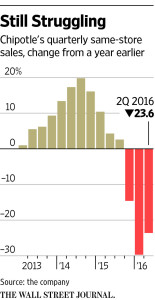This one isn’t food safety, but there’s something for the microbiology nerds to learn here. Thermometers moving from person-to-person (or in our world, food-to-food) can move pathogens around.
According to the New England Journal of Medicine, a fungal outbreak at a hospital was linked to skin probe thermometers being reused. Fun part is that they were being sanitized between use, just not using the correct compound (in this case they used quat sanitizer) but this was against the manufacturer’s instructions. 
End result: 70 patients with Candida auris over a 2 year period.
A Candida auris Outbreak and Its Control in an Intensive Care Setting
New England Journal of Medicine
Candida auris is an emerging and multidrug-resistant pathogen. Here we report the epidemiology of a hospital outbreak of C. auris colonization and infection.
METHODS
After identification of a cluster of C. auris infections in the neurosciences intensive care unit (ICU) of the Oxford University Hospitals, United Kingdom, we instituted an intensive patient and environmental screening program and package of interventions. Multivariable logistic regression was used to identify predictors of C. auris colonization and infection. Isolates from patients and from the environment were analyzed by whole-genome sequencing.
RESULTS
A total of 70 patients were identified as being colonized or infected with C. auris between February 2, 2015, and August 31, 2017; of these patients, 66 (94%) had been admitted to the neurosciences ICU before diagnosis. Invasive C. auris infections developed in 7 patients. When length of stay in the neurosciences ICU and patient vital signs and laboratory results were controlled for, the predictors of C. auris colonization or infection included the use of reusable skin-surface axillary temperature probes (multivariable odds ratio, 6.80; 95% confidence interval [CI], 2.96 to 15.63; P<0.001) and systemic fluconazole exposure (multivariable odds ratio, 10.34; 95% CI, 1.64 to 65.18; P=0.01). C. auris was rarely detected in the general environment. However, it was detected in isolates from reusable equipment, including multiple axillary skin-surface temperature probes. Despite a bundle of infection-control interventions, the incidence of new cases was reduced only after removal of the temperature probes. All outbreak sequences formed a single genetic cluster within the C. auris South African clade. The sequenced isolates from reusable equipment were genetically related to isolates from the patients.
CONCLUSIONS
The transmission of C. auris in this hospital outbreak was found to be linked to reusable axillary temperature probes, indicating that this emerging pathogen can persist in the environment and be transmitted in health care settings. (Funded by the National Institute for Health Research Health Protection Research Unit in Healthcare Associated Infections and Antimicrobial Resistance at Oxford University and others.)




 Feb. in Saskatoon).
Feb. in Saskatoon). 14 vomits and five diarrheal episodes reinforced, to me, how little is known.
14 vomits and five diarrheal episodes reinforced, to me, how little is known..jpg) others. And we’re not smart enough to know who those individuals are. The good ole’ days usually included stories about a family that lost a kid. And it was probably some kind of infectious disease. Western societies have enough science and enough affluence to decide, one is too many.
others. And we’re not smart enough to know who those individuals are. The good ole’ days usually included stories about a family that lost a kid. And it was probably some kind of infectious disease. Western societies have enough science and enough affluence to decide, one is too many..jpg) all," said
all," said .jpg) sprouting.
sprouting.